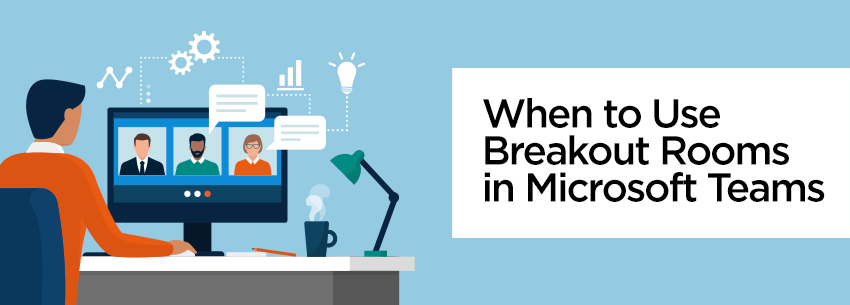When to Use Breakout Rooms in Microsoft Teams
Many small and medium business (SMB) owners are now beginning to take advantage of the virtual collaboration tools as they look to replicate the in-person work experience for remote workers. One new tool to help with this task is Microsoft Teams Breakout Rooms, which allows for the creation of smaller virtual breakout rooms within a larger meeting.
Microsoft Teams users can break participants into up to 50 different groups for smaller format discussion by using the Breakout Rooms feature. The participants can be broken up randomly (for example, three random participants per group) or into specific groups that the host assigns. The groups can have a private dedicated discussion without the distraction of the larger group. However, the host can still send announcements to the different groups and pull them back to the full meeting when the breakout sessions time is up.
The tool was first announced last July and generally became available in December 2020. Microsoft continues to innovate on this platform, and users can surely expect more features to be added in the future.
There are many times that a feature like Breakout Rooms can be helpful. For instance, it can be used for organized small-group brainstorming time, from which new ideas can be brought back to the larger group. It can also be used to sync up a particular team or group during a larger company-wide meeting. Leaders can also leverage breakout rooms to randomly pair up new colleagues so they can get to know their peers.
There are features within the Microsoft Teams platform that can be used to enhance these experiences. For instance, the Microsoft Whiteboard feature can allow a team to sketch out a new product idea or for virtual students to draw an idea. Other features such as chat and Together mode are also available to users in Breakout rooms.
Leveraging features like this within virtual collaboration tools like Microsoft Teams can help increase overall productivity for the company, especially as remote work continues to remain popular for many SMBs and other businesses. According to one report, 81 percent of employees said they felt virtual collaboration tools improved the overall company productivity. A separate report found that the tools allowed employees to reduce their need for in-person meetings by 30 percent.
To create a Teams Breakout room, the meeting host simply has to select the icon on the top control bar of the Teams desktop client. The dropdown menu allows the host to choose how many breakout rooms they would like to create and if groups will be chosen manually or automatically. From there, the host only needs to hit “Start” to enable the rooms.
IT admins will need to enable virtual breakout rooms for employees. Admins should ensure that settings for scheduling private meetings, channel meeting scheduling, meeting now in channels, and meeting now in private meetings are all enabled.

